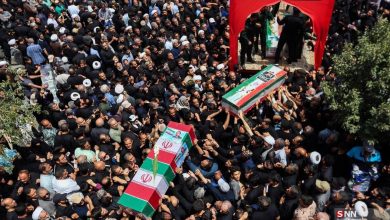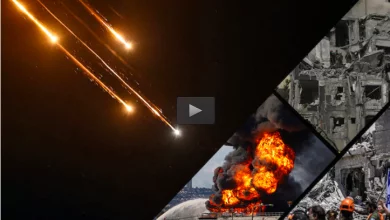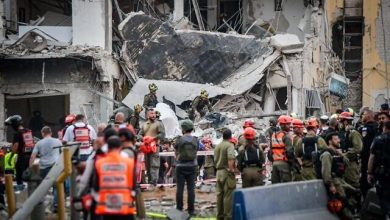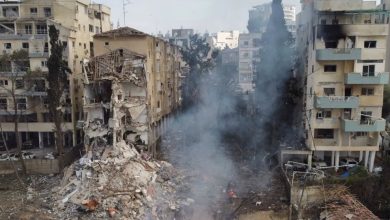Commander: Russia Fulfilling Commitments on S-300 Delivery to Iran
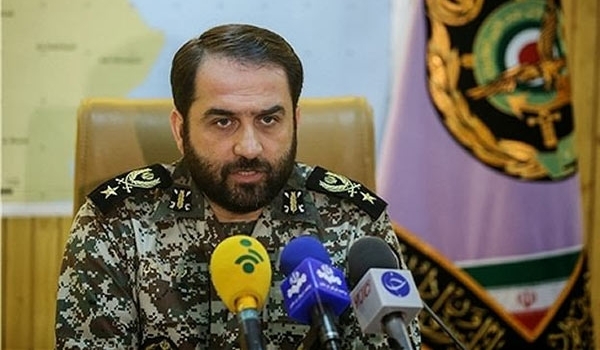
Commander of Khatam ol-Anbia Air Defense Base Brigadier General Farzad Esmayeeli underlined that Russia is fulfilling its commitments concerning the delivery of the sophisticated S-300 missile defense system to Iran.
“The Iranian Defense Ministry is following up the contract on the delivery of the (missile) systems and Russia is also fulfilling its undertaking,” Brigadier General Esmayeeli told reporters in Tehran on Friday.
He did not mention the exact date of the delivery of S-300 missile systems to Iran by Russia.
Brigadier General Esmayeeli pointed to Iran’s air defense capabilities, and said, “We have made a lot of efforts in this regard and our reliance is on home-made products… .”
In mid-April, Iranian Defense Minister Brigadier General Hossein Dehqan announced that Tehran and Moscow have worked out an agreement on the delivery of the Russian-made S-300 air defense systems to Iran and are now having final discussions over the date of the delivery.
“The agreement on the delivery of S-300 missile system has been finalized and the only remaining issue is the date of delivery now,” Brigadier General Dehqan told reporters in Moscow at the time.
Russian President Vladimir Putin on April 13 removed the ban on the delivery of the missile shield to Iran.
Dehqan said a public announcement will be made as soon as final talks over the exact delivery date end.
On April 15, General Dehqan announced that Iran would receive the S-300 air defense systems from Russia in 2015.
“We will sign the contract for the delivery of S-300 air defense systems with the Russian side during an upcoming visit to Moscow in the current year,” Brigadier general Dehqan said prior to his departure to Moscow to take part in 2015 International Moscow Security Conference.
He noted that the Iranian Defense Ministry has studied the details of the S-300 contract and the air defense system will be delivered to Iran before the end of 2015.
On April 14, local media in Russia said Moscow is capable of delivering five S300 air defense missile systems to Tehran in the first stage of their cooperation.
Interfax quoted a senior Russian General as saying that “supplying Iran with the S300 missile system would compensate the geopolitical mistake Russia did during last years”.
On April 13, Russia’s Presidential Spokesman Dmitry Peskov said that supplies of the Russian S-300 air defense missile systems to Iran may begin any moment in line with the relevant decree signed by the Russian president.
“The decree stipulates… no delays,” Peskov told journalists adding that the second provision of the decree states that “it comes into force on the day it was signed.”
After the Kremlin press service made the announcement on Putin’s decision for removing the ban on the delivery of the sophisticated missile shield, Tehran welcomed the decision and said it showed Moscow’s care for its undertakings.
“The decree came as an interpretation of the will of the two countries’ political leaders to develop and promote cooperation in all fields,” General Dehqan said on Monday before departing for Moscow to discuss the delivery.
Putin’s decision was announced hours after relevant reports said the Kremlin also plans to supply China with the advanced S-400 air defense system.
On April 14, Putin said during a meeting with Iran’s top security official, Rear Admiral Ali Shamkhani, that his decision set a role model at global class that every nation should remain loyal to its undertakings.
“The decision which was taken today bears this clear message that all countries are necessitated to remain committed to their undertakings,” Putin said at the meeting in Moscow .
In January, Tehran and Moscow signed an agreement to broaden their defensive cooperation and also resolve the problem with the delivery of Russia’s S300 missile defense systems to Iran.
The agreement was signed by General Dehqan and his visiting Russian counterpart General Sergei Shoigu in a meeting in Tehran in January.
The Iranian and Russian defense ministers agreed to resolve the existing problems which have prevented the delivery of Russia’s advanced air defense systems to Iran in recent years.
The two sides also agreed to broaden their defense cooperation and joint campaign against terrorism and extremism.
In 2007, Iran signed a contract worth $800mln to buy five Russian S300 missile defense systems.
But the deal was scrapped in 2010 by the then-Russian President Dmitry Medvedev, who was unilaterally expanding on sanctions against Iran imposed by the UN Security Council.
Iran filed a $4bln lawsuit against Russia in the international arbitration court in Geneva, which is currently pending review.
Moscow has struggled to have the lawsuit dropped, including by offering the Tor anti-aircraft systems as replacement, media reported in August, adding that the offer was rejected by Tehran.
The Antei-2500, however, may be a better solution, the reports said. The system does not formally fall under the existing sanctions against Iran while still being useful for the Middle-Eastern country.
While the S-300 was developed for the use by missile defense forces, the Antei-2500 was specifically tailored for the needs of ground forces, which could also be an advantage for Iran, known for its large land force.
Later, Iran rejected the offer, stressing that it would not change its order.
The S-300 is a series of Russian long range surface-to-air missile systems produced by NPO Almaz, all based on the initial S-300P version. The S-300 system was developed to defend against aircraft and cruise missiles for the Soviet Air Defense Forces. Subsequent variations were developed to intercept ballistic missiles.
The S-300 system was first deployed by the Soviet Union in 1979, designed for the air defense of large industrial and administrative facilities, military bases, and control of airspace against enemy strike aircraft.
In the meantime, Iran designed and developed its own version of the S-300 missile shield, known as Bavar (Belief) 373. The Iranian version has superior features over the original Russian model as it enjoys increased mobility and reduced launch-preparation time.


